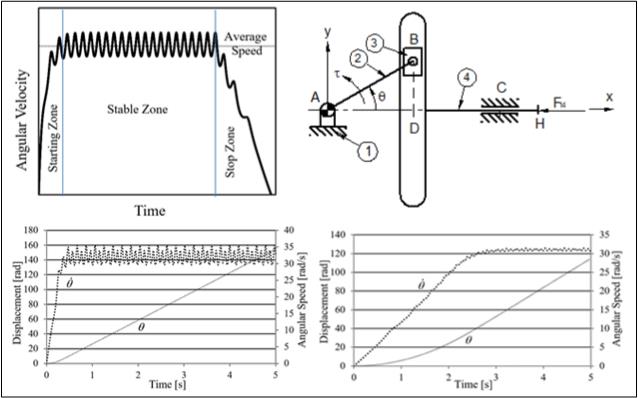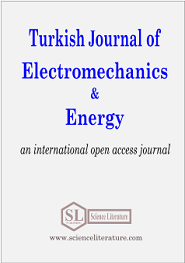
AC motor selection in machine design applications
Abstract
Asynchronous or induction alternating current (AC) motors are frequently used in industry to drive machines. An important feature of most AC motors is the torque-speed curve. The main purpose of this study is to provide a guide on how to create an electromechanical model for a real system and how the selected motor will affect the kinematic and kinetic performances. In this study, it is explained how to define the speed-torque characteristic and obtain an approximate speed-torque graph using the standard catalogue of motor manufacturers and Kloss formulas. Three approaches based on Kloss formulas from literature are introduced and one of them is selected to be used. A Scotch Yoke mechanism used for packaging purposes is chosen as an industrial application. The equation of motion of that mechanism is obtained and a numerical solution is shown. The electromechanical system equation includes the mechanism dynamic model and the Kloss equations containing the catalogue data of the selected motor. At the end of the numerical simulation, the dynamic performance of the system is being evaluated. It is investigated that the selected motor is enough to drive the mechanism. Additionally, the effect of adding a flywheel to the system on the fluctuation of speed is also examined.
Full Text:
PDFReferences
A. E. Fitzgerald, C. Kingsley Jr, S. D. Umans, Electric Machinery, Sixth Edition. New York, NY: McGraw-Hill, 2003.
D. Gerling, Electrical Machines Mathematical Fundamentals of Machine Topologies. Berlin, Heidelberg; Springer, 2003.
D. G. Alciatore, Introduction to Mechatronics and Measurement Systems, Fifth Edition. New York, NY: McGraw-Hill, 2019.
NEMA Standards Publication No. MG 1-1998 Motors and Generators.
E. Söylemez, Dynamics of Machinery, İstanbul: Birsen Press, 2007.
J. J. Uicker, G. R. Pennock, J. E. Shigley, Theory of Machines and Mechanisms, Fifth Edition. New York, NY: Oxford University Press, 2017.
J. Pedra, “On the determination of induction motor parameters from manufacturer data for electromagnetic transient program,” IEEE Transactions on Power Systems, vol. 23, pp. 1709-1718, 2008.
M. H. Haque, “Determination of NEMA design induction motor parameters from manufacturer data,” IEEE Transactıons on Energy Conversion, 23(4), pp. 997-1004, 2008.
N. Koljčević, Ž. Fuštić, M. Ćalasan, “Analytical solution for determination of induction machine acceleration based on Kloss equation,” Serbian Journal of Electrical Engineering, 17(2), pp. 247-256, 2020.
P. Aree, “Analytical approach to determine speed-torque curve of induction motor from manufacturer data,” Procedia Computer Science, vol. 86, pp. 293-296, 2016.
C. Kral, A. Haumer, H. Kapeller, V. Pascoli, “Modelling and simulation of a large chipper drive,” The Open Electrical & Electronic Engineering Journal, vol. 3, pp. 21-28, 2009.
J. Buksnaitis, “Analytical determination of mechanical characteristics of asynchronous motors by varying the electric current frequency,” Elektronika Ir Elektrotechnika, 112(6), pp. 3-6, 2011.
P. Aree, “Analytical determination of speed-torque and speed-current curves of single-cage induction motor under supply voltage and frequency variations,” The International Journal for Computation and Mathematics in Electrical and Electronic Engineering, 37(6), pp. 2279-2298, 2018.
ELK Motors, "IE3 Three phase motors, page 25," [Online]. Available: https://www.elkmotor.com.tr/tr/elk-motor-kataloglarimiz [Accessed: March 26, 2024].
H. Baruh, Analytical Dynamics. Singapore; McGraw Hill, 1999.
S. Singh, Theory of machines: Kinematics and Dynamics. Third Edition. India; Pearson, 2012.
URN: https://sloi.org/urn:sl:tjoee91307
Copyright (c) 2024 Turkish Journal of Electromechanics and Energy

This work is licensed under a Creative Commons Attribution-NonCommercial 4.0 International License.

 Indexed in:
Indexed in:















